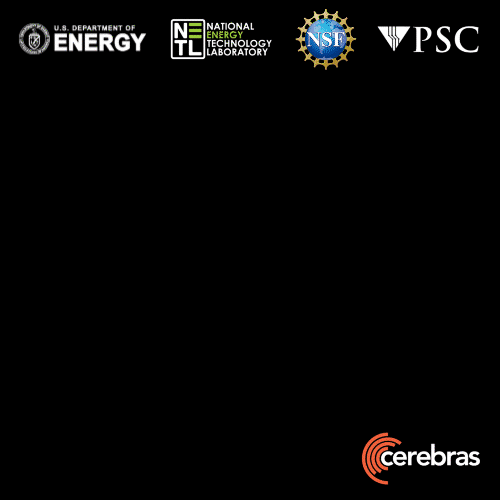July 22, 2023
Accelerating Large Language Model Training with Variable Sparse Pre-training and Dense Fine-tuning
We reduced pre-training FLOPs by 64% using sparsity. To the…
July 22, 2023
Variable Sequence Length Training for Long-Context Large Language Models
We show it is possible to accelerate the training for large…
June 9, 2023
SlimPajama: A 627B token, cleaned and deduplicated version of RedPajama
Today we are releasing SlimPajama – the largest…
May 23, 2023
Efficient Large-Scale GPT Training Using a Cerebras Wafer-Scale Cluster
Cerebras has built a platform for push-button training of…
May 22, 2023
Cerebras Architecture Deep Dive: First Look Inside the HW/SW Co-Design for Deep Learning [Updated]
Our ML-optimized architecture enables the largest models to…
April 17, 2023
Fine-Tuning with Cerebras AI Model Studio Launchpad
Cerebras shares research showing smaller foundation models…
March 28, 2023
Cerebras-GPT: A Family of Open, Compute-efficient, Large Language Models
Cerebras open sources seven GPT-3 models from 111 million…
February 16, 2023
Cerebras Announces Fine-Tuning on the Cerebras AI Model Studio
Announcing the addition of fine-tuning capabilities for…
February 15, 2023
What’s New in R0.6 of the Cerebras SDK
The latest release of our SDK includes a host of new…
February 7, 2023
Real-Time Computational Physics with Wafer-Scale Processing [updated]
Cerebras and NETL achieve two orders of magnitude…
January 30, 2023
To Bfloat or not to Bfloat? That is the Question!
The bfloat16 data format for deep learning shortens…
January 17, 2023
Cerebras Software Platform R1.7 is Out!
Our new release expands PyTorch support, releases code…
November 28, 2022
Harnessing the Power of Sparsity for Large GPT AI Models
Enabling innovation of novel sparse ML techniques to…
November 14, 2022
Genomics in Unparalleled Resolution: Cerebras Wafer-Scale Cluster Trains Large Language Models on the Full COVID Genome Sequence
Our joint work with Argonne National Laboratory (ANL) and…
September 14, 2022
What is Appliance Mode?
We created Appliance Mode for simplicity, ease of use, and…
August 15, 2022
Context is Everything: Why Maximum Sequence Length Matters
GPU-Impossible™ sequence lengths on Cerebras systems may…
June 22, 2022
Training Multi-Billion-Parameter Models on a Single Cerebras System is Easy
Changing model size is trivial on Cerebras, rather than a…
June 1, 2022
Multi-Billion-Parameter Model Training Made Easy with CSoft R1.3
CSoft R1.3 delivers GPT-J continuous pre-training, more…
June 1, 2022
Tensor Shape: Increasing Model Throughput
We write machine learning algorithms to fit the data, not…
April 14, 2022
Getting Started with PyTorch BERT Models
This walk through shows how easy it is to adapt and run…
April 13, 2022
Cerebras Software Platform R1.2 is Out!
Our new release expands PyTorch support and unlocks…





















